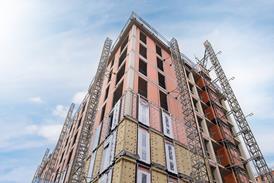This move is likely to increase fears that the quality of the building will be compromised after the sacking of architect Richard Rogers Partnership over the spiralling cost of the project.
The biggest changes are expected to be made to the project's unusual canopy roof design. An independent report from quantity surveyor Symonds Group is believed to suggest the roof will cost at least three times its initial budget of £500,000.
An assembly source said the complex roof structure would require unique modelling and engineering work, and may have to be redesigned to keep costs down. The source said: "The roof may have to be very different."
The Rogers-designed roof is a lightweight canopy that projects over an external piazza and is supported by very slender columns.
A spokesperson for the assembly confirmed that the "pioneering" roof design is under threat. He said: "There are still doubts over the buildability of the roof structure."
He added that last week's advertisement in the European Union's Official Journal for a developer or architect to take over the project asked for the final building to be "based" on RRP's designs. He said: "There is scope for tweaking."
But critics hit back at the proposals. A spokesperson for RRP said the roof should maintain its original design. He said: "The roof is not a complex structure in itself. That is a fallacy."
Paul Hyett, president of the RIBA and one-time conciliator between RRP and the assembly, said any revision of the design would inevitably spoil RRP's vision.
He said: "If there is to be any design amendment or development to the roof there is only one party that can carry this out in a manner consistent with the overall ambitions and character of the accepted proposal, and that is RRP."
Other changes might be made to decorative aspects on the outside of the building, after timber cladding was projected by Symonds to be about six times over-budget.
Although the assembly has vowed to cut costs, the project's construction budget has been raised to more than £20m, after an initial cap of £14m. This has prompted politicians to look at ways of lowering costs.
The assembly spokesperson said the increase partly allowed for inflation and increased consultation fees caused by the delay.
The building is due for completion by the second quarter of 2004.
























No comments yet